Julian McKinnon – 21 May, 2013
Gibson-Smith's work doesn't so much acknowledge as embrace that the faultless precision of logic and its ultimate expression, the digital environment, can never be fully reconciled with the muddy heterogeneity of material reality. In this way all technology is inherently fraught. Through mechanical stress, obsolescence, and entropy all things made are rendered useless and unmade.
I recently saw Sean Kerr deliver a lecture on the use of technology in art. Somewhere towards the middle of the discussion he opened a browser window with a video clip queued up on a still frame. “This is great!” he enthused. “It’s Marshall McLuhan Speaks and it’s brilliant.” He clicked the play button. The image stayed frozen, slightly obscured by an equally inanimate buffer wheel. Marshall McLuhan didn’t speak. Kerr looked from the display screen to the computer scratching his head in a manner that was either earnest or intentionally comical. “Situational irony…” rolled off his tongue, accented with a droll nod.
After a few moments he continued unfased. “We think of technology as computers and smart-phones. We forget that a pencil is technological,” He said holding up a well-used HB. “Sometimes old technology is more useful than new technology.” The trusty pencil was returned to the lectern as Kerr continued. “At the height of the cold-war, as the USA and the USSR desperately sought to one-up each other in the space race, the technologists at NASA bent their heads and spent six million dollars developing a ballpoint pen that would work in zero-gravity.” He paused for effect. “Meanwhile the Soviets used pencils.”
Peter Gibson-Smith‘s latest exhibition Who Can Say utilises that space-faring veteran of technology, the pencil, as much as it does graph plotters and the latest release of Google’s sketchup architectural software. Who Can Say is perplexingly subtitled 2 Dimensional Sculpture. The intrigue of the title is accentuated by the fact that the objects clustered around the floor space of Bath Street Gallery are obviously 3D.
Fragments of the human body - a pair of hands, feet, a disembodied head - are interspersed with other misshapen oval objects. They’re all overlaid with graphite-grey imagery, presenting the viewer with a swathe of visual reference rendered in intricate detail. The imagery combines fragments and clips of documentary source material with art historical references. The objects and image content open up Gibson-Smith’s familiar thematic territory: distrust for history’s fanciful ideological narrative, fusion of the archaic and the cutting edge, impending disaster intertwined with human progress, and the fragile nature of human accomplishment.
The way these objects are installed in the space doesn’t seem to work, there appear to be too many of the smaller objects - whose form is derived from rocks - that detract from the buzzing complexity of the real showstoppers: Superman, a super-sized human head; and Mercury, an over-sized foot. That said the installation is really of secondary importance to the works themselves, which would hold their own in any location. The craftsmanship of these sculptures is mind-boggling. Each of the objects is comprised of many component parts of corrugated conservation board painstakingly pieced together then overlaid with pencil-laden paper and encaustic wax. Superman, the largest and most ambitious work, is made of facets numbering in the multiple hundreds. The overlying imagery has been designed in such a way as to read as 2 dimensional whilst covering the 3 dimensional objects - hence the description as “2-dimensional sculpture”. It appears that what drives Gibson-Smith to create this work is as much about overcoming the self-imposed technical hurdles as it is about realising the artistic outcome.
Gibson-Smith used a flatbed plotter for the precise cutting of the overlaid paper drawing (he recently acquired it and, to his horror, discovered the driving system was windows xp based - an advanced technical apparatus of a few years ago that now seems as archaic as the Baghdad Battery in the hyperbolic time-scales of consumer driven technology). This brings an inhuman level of accuracy to detailed cutting, although changes in humidity and subtle shifts in air temperature cause the paper to expand or contract as the flatbed plotter does its work, creating inaccuracies between the vector model and the material outcome - something Gibson-Smith readily accepts: “It creates a visual representation of the theoretical existing beside the practical, the mathematical beside the organic. However, by allowing the organic component (paper) to do what it does, unrestrained, the theoretical form will never exactly match the surface. So for me the gaps make it more interesting. Another way of looking at it is to use a musical analogy: A singer who slightly misses a note can be a lot more interesting to listen to than a pitch perfect virtuoso for example Bonnie Prince Billy compared to Celine Dion.”
Gibson-Smith’s work doesn’t so much acknowledge as embrace that the faultless precision of logic and its ultimate expression, the digital environment, can never be fully reconciled with the muddy heterogeneity of material reality. In this way all technology is inherently fraught. Through mechanical stress, obsolescence, and entropy all things made are rendered useless and unmade. Systems of knowledge are outmoded; the prizes of today are tomorrow’s trinkets, discarded. Today’s frontiers are tomorrow’s suburban wastelands.
Who Can Say is an interesting new development in the arc of Gibson-Smith’s career - further advancing technical boundaries as it digs into familiar thematic terrain. It quietly reflects on technology and obsolescence, the myriad histories of art and culture, and the temporal fragility of all human endeavour.
Julian McKinnon
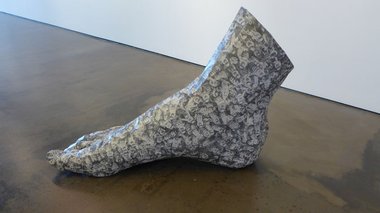

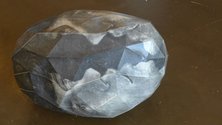

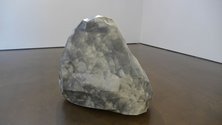
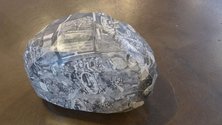
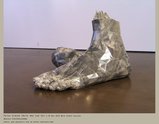
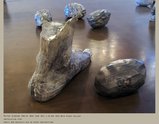
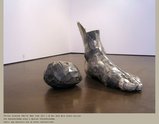
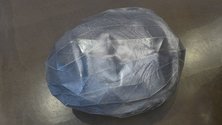
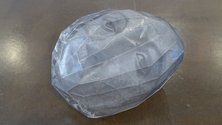
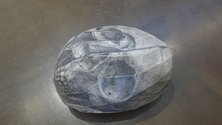
 Advertising in this column
Advertising in this column Two Rooms presents a program of residencies and projects
Two Rooms presents a program of residencies and projects


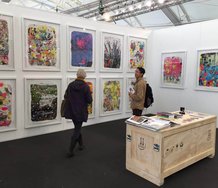
This Discussion has 0 comments.
Comment
Participate
Register to Participate.
Sign in
Sign in to an existing account.